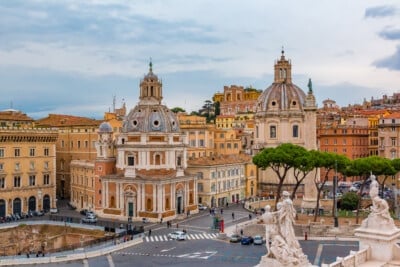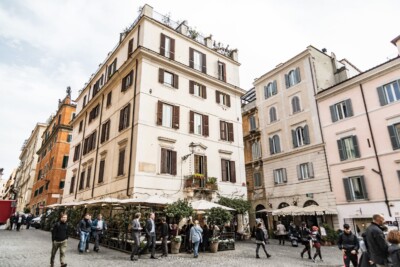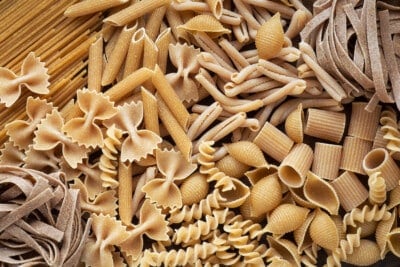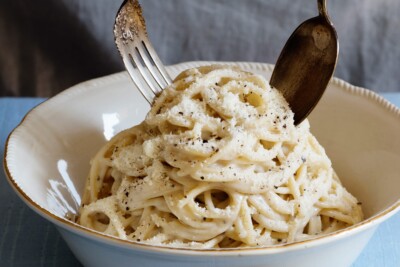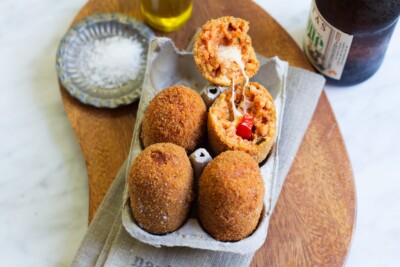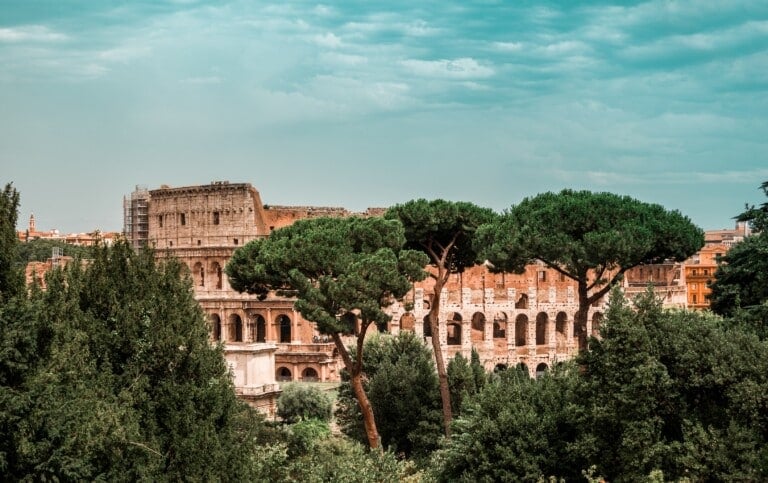
Lazio Travel Guide
Lazio is one of Italy’s most diverse and historically rich regions. It’s home to the country’s capital, Rome, as well as charming countryside towns and stunning coastal destinations.
Whether you want to explore ancient ruins, sip local wines in hilltop villages, or relax by the sea, this Lazio travel guide will help you plan the perfect trip.
From essential Lazio travel tips to the best Rome food and wine experiences, we’ve got everything you need to make the most of your time in this incredible region.
Lazio Travel Tips
Lazio travel planning is all about balancing the hustle and bustle of Rome with the slower pace of the surrounding countryside and coast.
Here are some essential Lazio travel tips:
When to Visit: Spring (April-June) and fall (September-October) offer mild weather and fewer crowds.
Getting Around: Rome has an extensive public transportation system, but renting a car is the best way to explore the countryside.
Where to Stay in Rome: Choose from luxury hotels near the historic center, boutique stays in Trastevere, or charming guesthouses in Monti.
Things to Do in Rome: Visit the Colosseum, Vatican City, and the Trevi Fountain, but also explore lesser-known gems like the Appian Way and Testaccio’s food scene.
Rome Itineraries: Whether you have a weekend or an entire week, mix historical sites with food markets, day trips, and hidden corners to experience Rome like a local.
- Extend Your Visit: A lot of our travel clients fly in and out of Rome but then connect to other parts of Italy. They may drive into the Umbria or Puglia, train to Tuscany or Naples or fly to Sicily.
Where To Stay In Lazio
Rome
As Italy’s capital and a global cultural hub, Rome is an unmissable destination packed with history, art, and incredible food. From exploring ancient sites like the Roman Forum and Pantheon to indulging in Rome’s famous pasta dishes like carbonara and cacio e pepe, there’s no shortage of things to do in Rome.
Strolling through neighborhoods like Trastevere and Testaccio offers authentic local life, while evenings are best spent sipping wine in lively piazzas. Rome has a culture, attitude, and pace all its own.
Most clients only want to stay a night or two, but we highly recommend waiting three to four nights to understand this sprawling city better. As part of this Lazio travel guide, we wanted to share some essential Rome articles from where to stay to where to eat:
The Lazio Countryside
If you ask us, not nearly enough visitors explore the immediate area beyond Rome. Lazio’s countryside is filled with picturesque villages and vineyard-covered hills, many of which are available via easy day trips or quick overnights.
Frascati, famous for its white wine, is a perfect day-trip destination for wine lovers. Tivoli boasts stunning villas and gardens, including Villa d’Este and Villa Adriana. Castel Gandolfo, the Pope’s summer residence, offers breathtaking views of Lake Albano, while Civita di Bagnoregio, the “dying town,” is a must-see for its striking hilltop beauty.
Whether you’re visiting for history, relaxation, or wine tasting, Lazio’s countryside offers a refreshing escape from the city.

Roman Coast
Lazio’s coastline isn’t as renowned as that of Liguria, Tuscany, or Campania, but it does have its charms. This area combines ancient ruins, lively beach resorts, and charming seaside towns.
Ostia, home to the well-preserved ruins of Ostia Antica, gives visitors a glimpse of ancient Roman port life. Fregenae is a popular spot for locals seeking a quick beach escape from Rome. Anzio, known for its fresh seafood and historical significance, is an excellent destination for history buffs and food lovers.
Further south, Sperlonga’s whitewashed buildings, stunning beaches, and crystal-clear waters make it one of Lazio’s most beautiful coastal retreats.
Lazio Food And Wine
Rome’s food and wine culture is at the heart of Lazio’s culinary identity. The region is famous for its rich pasta dishes, including:
Carbonara: A creamy pasta dish with eggs, guanciale, and pecorino.
Amatriciana: A tomato-based pasta sauce made with guanciale and pecorino.
Saltimbocca alla Romana: Veal cutlets wrapped in prosciutto and sage, cooked in white wine.
Gricia: A pasta dish similar to carbonara but without eggs, made with guanciale and pecorino.
Abbacchio al Forno: Roast lamb, a traditional dish enjoyed during Easter celebrations.
Maritozzi: Sweet, cream-filled buns are often enjoyed for breakfast.
Regarding wine, Lazio’s most famous variety is Frascati, a crisp, refreshing white wine perfect for warm days. Cesanese, a lesser-known but excellent red wine, is also produced in the region and pairs beautifully with traditional Roman dishes. Finding wine from Lazio in the United States is challenging, so order the local wine while in the area.
Also, it should be said that Rome (along with Milan and Turin) has equally happening cocktail and craft beer scenes, so don’t miss out on that either!
Classic Lazio Recipes
If you’re not yet heading to Rome, you can still bring the flavors of Lazio home with these classic recipes:
- Supplì: Deep-fried rice balls stuffed with mozzarella, a popular Roman street food.
- Fiori di Zucca: Stuffed, battered, and fried zucchini flowers
- Cacio e Pepe: You only need three ingredients to make this recipes but a few key tips separate a mediocre version from the excellent version below.
Lazio Travel Planning Resources
Starting to plan Italy travel? Check out these helpful links:
- Apartments: Use code SaltandWindTravel/AM when booking apartment stays with Plum Guide
- Hotels: Book High-Quality Hotels at Booking.com
- Italy Trip Calculator: Get our new budget calculator to estimate your Italy trip cost accurately.
- Italy Trip Planner: Planning a trip to Italy yourself? You’ll want our Italy itinerary planner so you can access our expert travel insights from more than ten years of travel planning in Italy!
- Tours: Book in-depth tours with Context Travel
- Shop: See our favorite travel essentials in our Amazon store
Get A Personalized Travel Itinerary
Frequently Asked Questions About Lazio Travel
Lazio offers a diverse array of attractions, blending ancient history, natural beauty, and vibrant local culture:
- Rome: The heart of Lazio and Italy’s capital, renowned for iconic landmarks like the Colosseum, Vatican City, and the Roman Forum.
- Tivoli: Home to stunning villas such as Villa d'Este with its famous gardens and fountains, and the ancient Villa Adriana (Hadrian's Villa).
- Ostia Antica: An ancient port city of Rome, offering well-preserved ruins that rival those of Pompeii.
- The Castelli Romani: A group of hilltowns to the southeast of Rome, known for their history, culture, and production of white wine.
- Sperlonga and Gaeta: Coastal towns with beautiful beaches and charming old towns, ideal for summer visits.
Navigating Lazio effectively can enhance the visitor experience, allowing more time and ease in exploring the region:
- Transportation: While many of Lazio's key sites are accessible via public transport, renting a car can provide greater flexibility, especially for visiting the more rural or coastal areas.
- Accommodations: Consider staying in agriturismos (country houses) or boutique hotels outside of Rome for a unique and authentic experience.
- Local Cuisine: Don’t miss trying local dishes such as spaghetti alla carbonara or saltimbocca and regional specialties in areas outside of Rome, like the artichokes in Ladispoli or porchetta in Ariccia.
Lazio’s rich cultural heritage can be explored through various experiences:
- Historical Sites: Beyond Rome, explore the Etruscan tombs in Cerveteri and Tarquinia, UNESCO World Heritage sites.
- Museums and Art: Visit the National Etruscan Museum at Villa Giulia in Rome or the modern art exhibited at the MAXXI museum.
- Festivals and Events: Participate in local festivals such as the Sagra del Carciofo Romanesco in Ladispoli, celebrating the artichoke, or attend opera performances at the Baths of Caracalla during the summer.
- Guided Tours: Opt for guided cultural tours or archaeological walks in lesser-known locales to gain deeper insights into the region’s history and cultural nuances.
